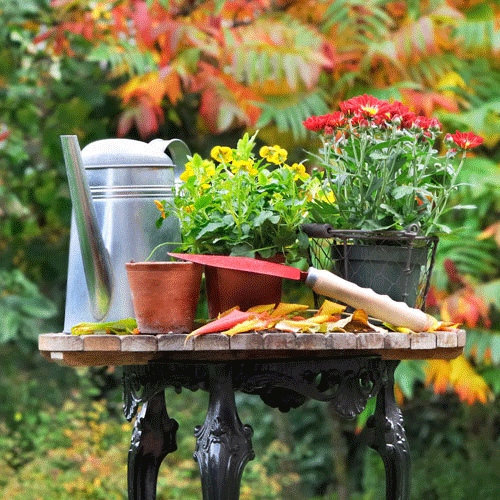Fall is a fabulous time to tackle landscaping tasks in your yard. In fact, some seasoned gardeners believe fall rivals spring when it comes to the number of gardening opportunities. Don’t put away that garden spade just yet — you’ve got some planting to do! Here is a list of tips to help you get the job done:
Plant more plants
Fall is a great time for planting because the soil temperature is perfect for root establishment. Perennials, vines, shrubs and trees can all be planted up to six weeks before the ground completely freezes. Be sure to keep new plantings watered until the ground is frozen. Fall is the time to plant spring-flowering bulbs such as tulips, daffodils and summer-blooming lilies. Tip: To avoid your treasures from being dug up by squirrels, cover the newly planted area with chicken wire, then cover with shredded leaves or mulch to cover any scent. It’s also a great time to visit your local garden centre to check out new arrivals especially for the fall planting season.
Decide and divide
When perennials begin to bloom less, clumps become too large or start dying out in the centre. If you want to increase the number of clumps or move them to another location, it’s time to decide and divide. Dig up the entire clump and use a sharp spade or heavy knife to cut it into smaller sections, just as you would cut up a pie. Replant the sections and water them well.
There are two prime times to divide perennials: Spring-flowering perennials are divided in the fall; summer-flowering and fall-flowering perennials are divided in spring. Some plants can be divided anytime. This splits up the task into two seasons and makes the job easier. Fall is the perfect time to expand the flowering times in your collection as most garden centres stock a wonderful selection of fall flowering plants.
To cut or not to cut?
Avoid shearing hedges and pruning deciduous trees in the fall. Pruning stimulates new growth which is best left for spring and summer, however any unruly shoots can be safely snipped. Cut back perennials that self-seed or have no winter interest, leaving six to eight inches of stubble to trap the snow and insulate the crown over winter. Perennials such as sedums and ornamental grasses are outstanding features in the winter garden and can be cut back in spring.
Leave the leaves
If you have a mulching mower, mulch fallen leaves right into your lawn, rather than raking. If you have too many leaves, run the mower over the leaves first, then rake them up and apply as organic matter to your garden or simply add to your compost bin. Shredded leaves break down into humus faster than non-shredded leaves. Humus helps to retain soil moisture and nutrients that plants then utilize.
Healthy harvest
Canning sun-ripened tomatoes and drying fresh herbs (such as parsley and oregano), can add wonderful aromas to your home and add home-made goodness to meals. Fresh herb aromas and a freshly baked fall apple pie just prior to an open house have been known to sell a home!
Water-wise
Be sure to keep within the guidelines of municipal water restrictions, yet keep your garden watered in the fall right until freeze-up as plants are still growing.
Urning for containers
Add some fall flair to your summer containers by switching up plants with flowering kale, ornamental cabbages or colourful, fall mums.
Seeding and sodding
September is the best time for turf establishment as the air temperatures are cooler and there are fewer germinating weed seeds. Applying a fall lawn fertilizer ensures the hardiness of grass before the harsh winter.
Bring the outside in
Before the first hard frost, dig up any tender bulbs and tubers, such as dahlias and cannas, and store them in a cool dark place for replanting next spring. Bring in any tropical plants from their patio location. Be sure to hose them down with insecticidal soap and water to ensure no travelling pests hitch a ride indoors for a cozy winter retreat.
Help from the pros
The fall gardening season truly is a busy time! If you simply don’t have the time or the energy to prepare your property for the coming seasons, why not hire a professional to do the work for you? For more tips and advice, or to connect with one of over 2,000 members of Landscape Ontario, visit: LandscapeOntario.com
From Denis Flangan, Landscape Ontario
About Landscape Ontario Horticultural Trades Association
Landscape Ontario Horticultural Trades Association is one of the most vibrant associations of its kind, comprised of over 2,000 members, ten sector groups and nine local chapters. Its trade mission is to promote the horticulture industry in Ontario, and its public mission is to promote the joys and benefits of green spaces.

